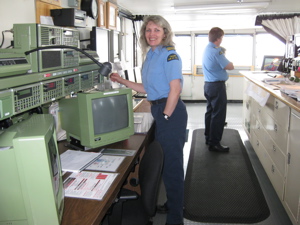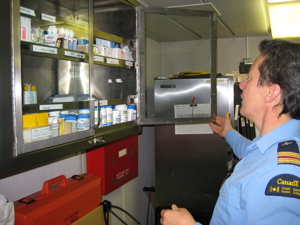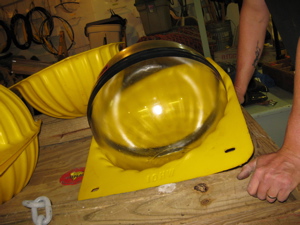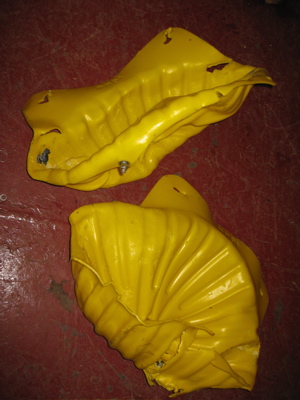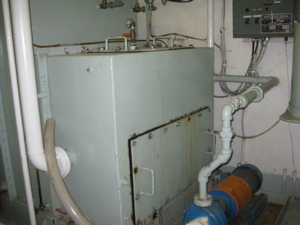Gerty WardAugust 7, 2008In this dispatch I'll answer some questions you might have. We have been too far north to receive email since the evening of August 3rd. Now that we are heading south again, we are all getting anxious to hear from family and friends. Every conversation now contains a reference to communication. We have become so accustomed to instant gratification that it is a bit disturbing to be suddenly cut off. I have been reading Ring of Ice: True Tales of Adventure, Exploration and Arctic Life (Peter Stark, ed.) and thinking about the severe hardships and isolation endured in order to explore this area. A few days without email seems rather trivial by comparison. Our wonderful Electronics Officer Heather Kinrade is predicting that the email satellite will be far enough above the horizon sometime this afternoon.
While I am waiting to answer more of your questions, I thought I would answer some of the random questions that I have learned interesting answers to over the past few weeks. Have you ever wondered what happens if we get sick or hurt? The ship's Medical Officer is Monique Villenevve. She is available any time for any medical problem. By presenting a calm, reassuring manner and asking questions to determine the problem, she works to make us all feel confident and safe. The ship is able to communicate at all times with a hospital in Halifax, Nova Scotia. The doctors there are very aware of the isolated conditions on the ship and can consult on any type of medical emergency. Have you ever wondered what is inside a glass ball? Technically, the yellow outside part is called a hard hat and the thing inside is the glass ball. It is made up of two hemispheres, called mated halves, that are put together and secured by sucking all the air out, creating a vacuum. Each glass ball provides 50 pounds of buoyancy for the mooring.
Once in a while, the hydrostatic pressure collapses or implodes a glass ball. Then all that comes up is a mangled hard hat. Have you ever wondered what happens when we flush? All ship black water is piped here.
The material is decomposed in 3 stages under aerobic and anaerobic conditions, like in a septic tank, only faster. The material goes through 3 stages. After stage 3, the water and the sludge are close to clean. The material is then pumped through a longer pipe where a small amount of chlorine is added (just like in city water treatment plants), then this water is discharged from the ship. I am looking forward to answering more of your questions through "Ask the Team" at www.polartrec.com. Last updated: October 7, 2019 | |||||||||||||||||||||||||
Copyright ©2007 Woods Hole Oceanographic Institution, All Rights Reserved, Privacy Policy. | |||||||||||||||||||||||||


